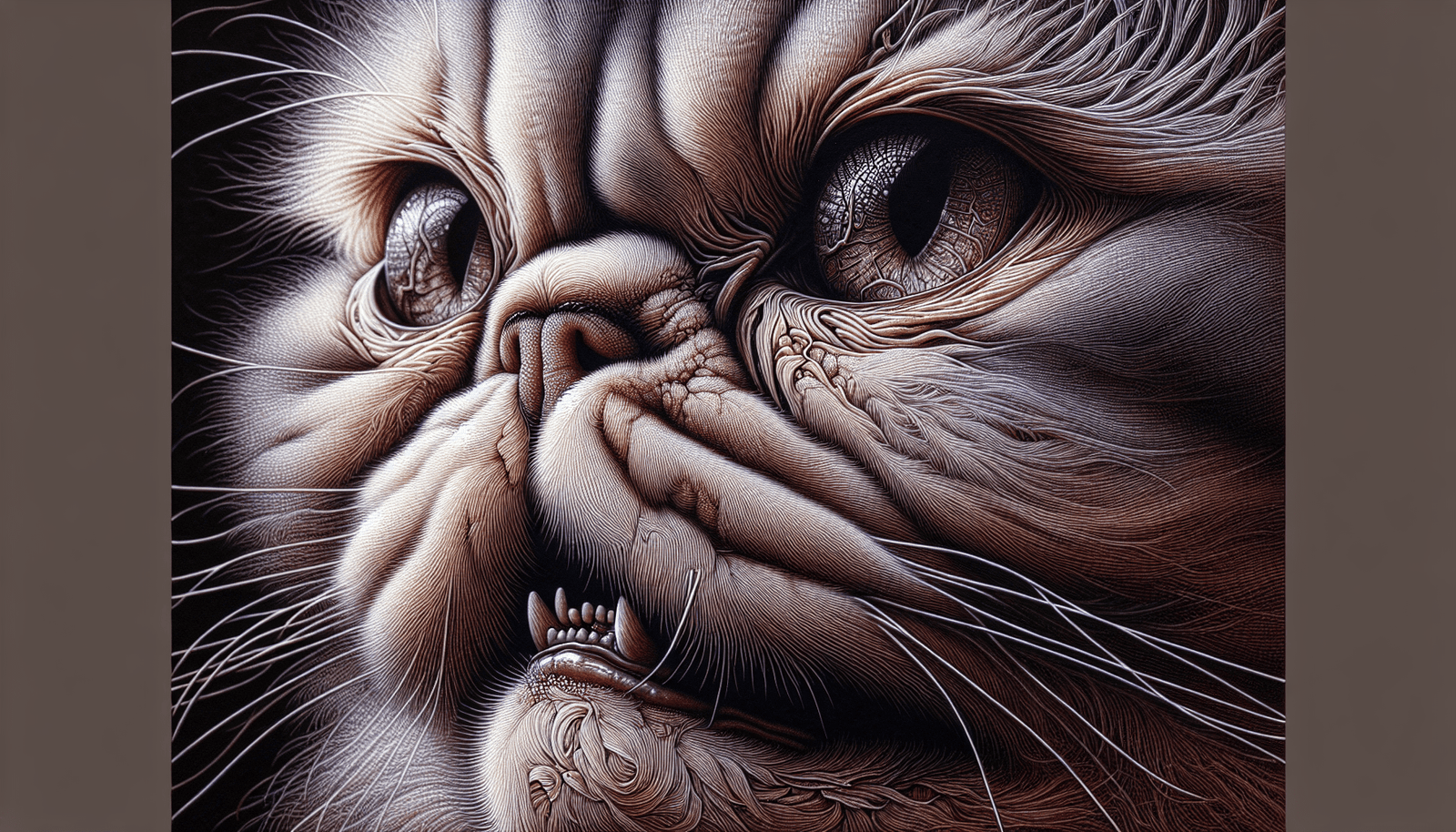Hello there! If you have a cute Persian cat at home, you may want to pay attention to this article about common breathing problems they may experience. From brachycephalic syndrome to nasal discharge, we will discuss the different issues that Persian cats may face when it comes to their breathing. By understanding these potential problems, you can better care for your furry friend and ensure they stay healthy and happy. Let’s dive in and learn more about how to recognize and manage common breathing issues in Persian cats. Do Persian Cats Have Breathing Problems?
Have you ever wondered why Persian cats seem to have difficulty breathing? In this article, we will explore the common breathing problems that Persian cats experience and how you can help alleviate their symptoms. Read on to learn more about these adorable but sometimes troubled feline friends.
Understanding the Anatomy of Persian Cats
Before we delve into the specific breathing problems that Persian cats face, let’s take a closer look at their unique anatomy. Persian cats are known for their flat faces, also known as brachycephalic features. These features, which include a shortened nose and compressed airways, can often lead to respiratory issues.
Brachycephalic Syndrome
Brachycephalic syndrome is a condition that is commonly seen in cats with short, flat faces like Persians. It is characterized by anatomical abnormalities in the upper airway that can restrict airflow and cause breathing difficulties. Some of the common features of brachycephalic syndrome in Persian cats include:
| Anatomical Abnormalities | Symptoms |
|---|---|
| Stenotic Nares (narrow nostrils) | Noisy Breathing |
| Elongated Soft Palate | Snoring |
| Hypoplastic Trachea (narrow windpipe) | Labored Breathing |
These anatomical abnormalities can result in Persian cats having trouble breathing, especially during physical activity or in hot weather.
Identifying Breathing Problems in Persian Cats
As a Persian cat owner, it’s essential to be able to recognize the signs of breathing problems in your feline companion. While some breathing issues may be normal for Persian cats due to their brachycephalic features, there are some symptoms that should not be ignored. Here are some common signs that your Persian cat may be experiencing breathing problems:
Noisy Breathing
If you notice that your Persian cat is making loud or unusual noises while breathing, such as wheezing or snorting, it could be a sign of a respiratory issue. Noisy breathing can indicate a blockage in the airways or an underlying condition that requires medical attention.
Shortness of Breath
If your Persian cat seems to be struggling to catch their breath, panting excessively, or breathing rapidly, it may be a sign of respiratory distress. Shortness of breath can be a serious symptom that warrants a visit to the veterinarian to determine the cause and appropriate treatment.
Snoring
While snoring can be common in brachycephalic breeds like Persian cats, excessive or loud snoring could indicate an obstruction in the airway or other breathing problems. If your cat’s snoring is accompanied by other respiratory symptoms, it’s best to consult with a vet.
Labored Breathing
If your Persian cat is breathing with visible effort, using accessory muscles to breathe, or appears to be struggling to inhale and exhale, they may be experiencing labored breathing. Labored breathing can be a sign of a serious respiratory issue that requires immediate medical attention.

Managing Breathing Problems in Persian Cats
If you suspect that your Persian cat is experiencing breathing problems, it’s crucial to seek veterinary care promptly. Your vet will be able to diagnose the underlying cause of your cat’s respiratory issues and recommend appropriate treatment options. In the meantime, there are some steps you can take at home to help manage your cat’s breathing problems:
Provide a Cool and Well-Ventilated Environment
Since Persian cats can be sensitive to heat and humidity, it’s essential to keep their living environment cool and well-ventilated. Make sure your cat has access to fresh air, and consider using fans or air conditioning to maintain a comfortable temperature.
Monitor Your Cat’s Weight
Obesity can exacerbate breathing problems in Persian cats, so it’s essential to keep your cat at a healthy weight. Monitor your cat’s diet and exercise levels to ensure that they are maintaining an ideal body condition.
Use a Humidifier
Dry air can irritate your cat’s airways and make breathing more difficult. Using a humidifier in your cat’s living space can help keep the air moist and soothe respiratory issues.
Regular Grooming
Persian cats are known for their long, luxurious coats, which can sometimes impede their ability to breathe comfortably. Regular grooming can help prevent matting and reduce the risk of hair obstructing your cat’s airways.
Consult with Your Veterinarian
If your Persian cat is experiencing breathing problems, it’s essential to consult with your veterinarian for a proper diagnosis and treatment plan. Your vet may recommend medications, surgery, or other interventions to improve your cat’s breathing and overall quality of life.
Conclusion
In conclusion, Persian cats are prone to breathing problems due to their unique anatomy and brachycephalic features. As a responsible pet owner, it’s crucial to be aware of the signs of respiratory issues in your Persian cat and seek prompt veterinary care if you suspect a problem. By understanding the common breathing problems that Persian cats face and following the tips provided in this article, you can help your feline friend breathe easier and enjoy a happy, healthy life.

